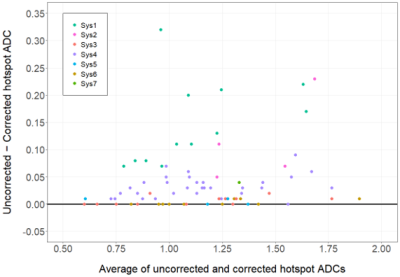Debosmita Biswas1, Justin Romanoff2, Dariya Malyarenko3, Wesley Surrento4, Habib Rahbar1, Nola Hylton5, David C Newitt5, Thomas L Chenevert3, and Savannah C Partridge1
1Radiology, University of Washington, Seattle, WA, United States, 2Center for Statistical Sciences, Brown University, Providence, RI, United States, 3Radiology, University of Michigan, Ann Arbor, MI, United States, 4Biomedical and Health Informatics, University of Washington, Seattle, WA, United States, 5Radiology and Biomedical Imaging, University of California San Francisco, San Francisco, CA, United States
1Radiology, University of Washington, Seattle, WA, United States, 2Center for Statistical Sciences, Brown University, Providence, RI, United States, 3Radiology, University of Michigan, Ann Arbor, MI, United States, 4Biomedical and Health Informatics, University of Washington, Seattle, WA, United States, 5Radiology and Biomedical Imaging, University of California San Francisco, San Francisco, CA, United States
Gradient nonlinearity (GNL) correction for ADCs of 81 breast
lesions in the A6702 multicenter breast DWI trial showed ADC error varied
across vendors and gradient systems. Results suggest GNL correction may improve
generalizability of diagnostic ADC thresholds.

Figure 1. Example of the
direction averaged correction map Cave and impact on tumor ADC
values. A 50 year old woman with a 7 mm suspicious BIRADS 4 lesion, which was
found to be malignant on biopsy. (a,b,c) show the uncorrected ADC map, GNL
correction map and the resulting ADC map after applying GNL correction. Insets
on images (a) and (c) show lesion area. The lesion ADC values were lower after
GNL correction. (Hotspot ADCs Uncorrected = 1.19 x10-3 mm2/s
Corrected = 0.99 x10-3 mm2/s)
